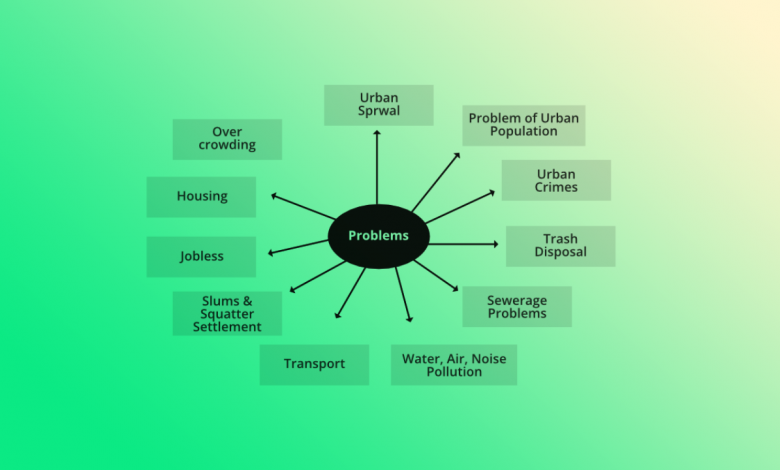UPSC Editorial Analysis
Problems associated with Urban Pollution

[GS Paper 3 – Conservation, Environmental pollution and Degradation]
Context – More than 1,10,000 infants are likely to have been killed by air pollution in India in 2019, almost immediately after being born while long-term exposure to outdoor and household air pollution was estimated to be responsible for about 1.67 million annual deaths amongst the adult population in the country.
About Pollution
- Pollution refers to the introduction or addition of harmful materials into the environment. These harmful materials are termed as pollutants.
- Pollutants can be produced naturally such as the volcanic ash or created by human activity such as trash or runoff produced by the factories. The pollutants tend to damage the quality of air, water and land.
Challenges associated with Pollution in Urban Areas
- Demands for air purifiers: Demand for air purifiers has boomed. Recently, in Delhi, pollution-related curbs were lifted and schools opened, despite air quality continuing to be in the “very poor” category.
- Health related problems: For the majority of urban north Indians who can’t afford air purifiers, life continues amidst dust, cough and breathlessness.
- Children are most affected: Our children in urban localities are growing up with stunted lungs, amidst poverty.
- High percentage of respiratory problems: Eighty per cent of all families in Delhi are noted to be suffering respiratory ailments due to severe pollution.
Ways to Reduce Air Pollution
- Expansion of green covers across urban areas: Ahmedabad’s municipal corporation, for instance, has experimented with urban forests, with the city’s 43rd urban forest inaugurated in June 2021 over 20,000 trees in 7,625 sq. meters. Chandigarh has about 1,800 parks. Close to 46 per cent of the city was classified as a green area in 2019.
- Use of Miyawaki technique: Civil society could also help in Chennai, the NGO Thuvakkam, with a volunteer force of 1,800, has been able to grow 25 Miyawaki forests, raising over 65,000 trees. Such plantations are now being replicated in other cities including Tuticorin, Vellore and Kanchipuram.
- Push for airshed management: With a focus on understanding meteorological, seasonal and geographic patterns for air quality across a large region. In the US, the passage of the Air Quality Act (1967) saw the state of California being divided into 35 districts which had similar geographic and meteorological conditions and pollution was regulated at the state level. This approach was successful in reducing emissions by 98 per cent from 2010 to 2019.
- Heavy penalty on polluting cars: Inspiration can also be taken from London’s air pollution revolution; an Ultra-Low Emission zone has been established in Central London, with hefty daily fees on cars that emit more than 75g/km of pollution.
Water Pollution in Indian Cities
- Untreated water into freshwater bodies: 72 percent of urban sewage is untreated in India’s urban freshwater bodies. The Central Pollution Control Board reckons that more than 50 percent of 351 river stretches (on 323 rivers) are polluted. Over 4,000 septic trucks (with each truck having 5,000 litres of human waste) dispose of their waste in the Ganga every day. In Delhi, about 941 MLPD of raw sewage finds its way to the river, killing off fish and preventing rituals on the banks.
- Riverine Pollution: Riverine pollution causes due to raw sewage overflowing from sewage treatment plants, untreated waste from unauthorized colonies, industrial effluents, sewer water from authorized colonies and inter-state pollution.
- Water scarcity: More than 40 per cent of Indians are expected to face water scarcity by 2050 and close to 35 million will face annual coastal flooding with sea level rise.
- Lack of planning: Apathy prevails as of May 2021, only 16 Indian cities had disclosed their plans to tackle climate change to international institutions, with only eight having actual sustainability-related targets in their urban master plans. Only 43 per cent of all Indian cities surveyed actually sought to address climate change adaptation as a topic in their master plans, while only five had a GHG emission reduction target.
Way Forward
Urban planning and urban pollution are largely neglected in our governance model. Unplanned cities are facing various problems. We must embrace the technology to fight the pollution in urban India.





.png)



